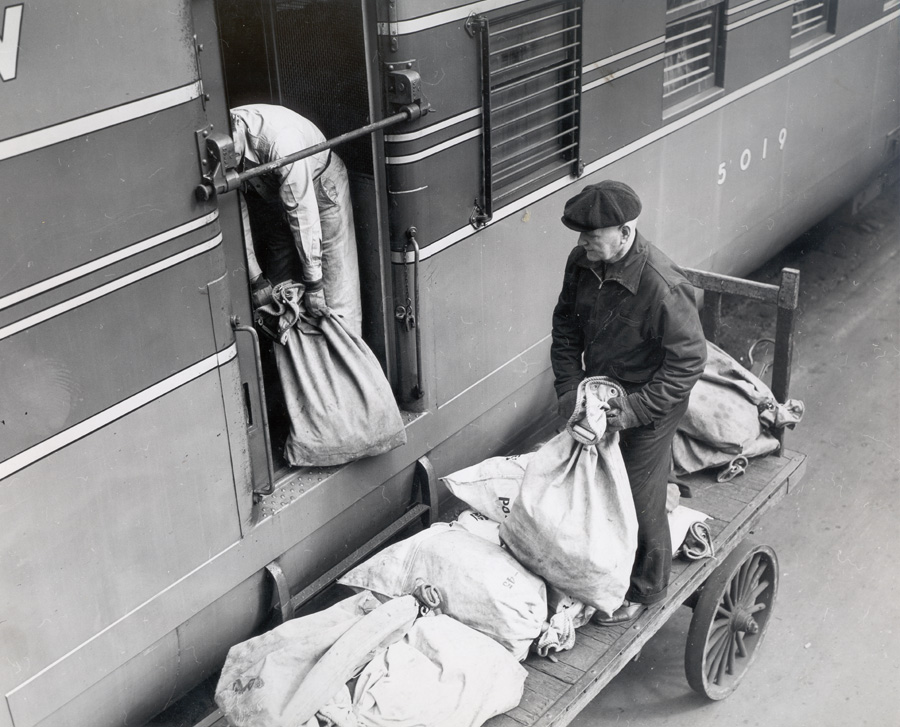
Trains began carrying U.S. mail in the 1830s. In 1864, the Post Office Department began assigning clerks who would sort and process the mail while the train was moving. Instead of sitting in bags until arriving at their destination, mail pieces were taken out and sorted in the train car, which speed processing and delivery times. In 1869, special agents (i.e., inspectors) began supervising the mail and clerks on the new Railway Mail Service (RMS) cars.
The inspector and railway mail clerk relationship was a rocky one. Inspectors rode aboard various railway mail cars without warning, never hesitating to write up infractions. Sometimes clerks realized they had been caught making errors. Other times they felt that inspectors were a bit overzealous in their reports.

In 1902 President Theodore Roosevelt made that relationship worse when he issued a dramatic anti-labor law known as the “Gag Rule.” The law made it illegal for U.S. government employees to advocate to Congress, individually or through associations, for pay increases or to alert them to poor working conditions. Workers could only put their issues in front of Congress if their departments did so. Postmaster General Robert Wynne believed workers’ issues could be resolved within the structure of the Post Office Department. He and his officials were quite rigid in policing their employees under the Gag Rule. Among their tools were the postal inspectors. Inspectors spied on associations and unions, reporting potential troublemakers to the Department. As a result, several railway mail clerks lost their jobs. Fortunately for the workers, the Gag Rule was short lived when revoked in 1912.
Postal inspectors continued to ride railway mail trains, policing RMS workers, and submitting reports on workers and the service itself through the 20th century. This part of the inspectors’ duties ended when the last RMS train ran in June 1977.

